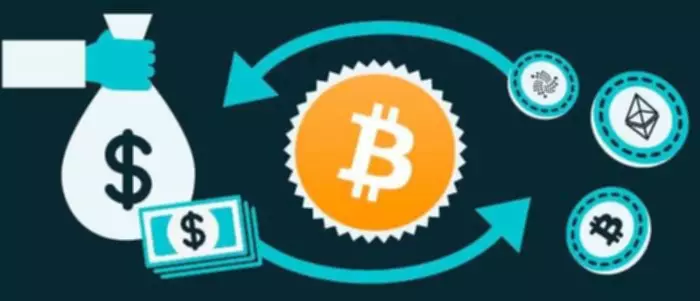Decentralized liquidity pools also reduce the risk of market manipulation since they’re not susceptible to the same kind of manipulation as centralized exchanges. Staking in a liquidity pool involves depositing or locking up your digital assets in a pool to earn incentives. These incentives can include transaction fees from the pool or additional tokens from the protocol, often enhancing the return for liquidity providers. An AMM (automated market maker) is a type of decentralized exchange protocol that uses a specific algorithm to price tokens.
It also allows for greater liquidity, as anyone can contribute tokens to the pool and earn fees. It’s no surprise liquidity pools attract both speculation and skepticism of equal intensity. As a nascent technology, liquidity pools have plenty of growth opportunities and risk factors that should be considered. Providing liquidity is very risky for reasons like a thing called impermanent loss, or even a total loss of funds through smart contract failures or malicious rug pulls. Established liquidity pools can have approximately $1 million invested in them, making them relatively stable for novice crypto traders. Smaller pools are more vulnerable to market swings, which might result in a drop in the value of your tokens.
Most liquidity pools also provide LP tokens, a sort of receipt, which can later be exchanged for rewards from the pool—proportionate to the liquidity provided. Investors can sometimes stake LP tokens on other protocols to generate even more yields. Furthermore, Liquidity pools use a concept called Automated Market Making (AMM) to determine the price of each token.


The more assets in a pool and the more liquidity the pool has, the easier trading becomes on decentralized exchanges. These tokens are used to initiate cryptocurrency trading by liquidating them. Liquidity pools are broadly relied upon by many decentralized exchanges to increase user participation and facilitate trade.
If the smart contract or blockchain used by a particular protocol has vulnerabilities, they can be exploited by malicious actors. This can put your funds and the seamless functioning of the platform at risk, resulting in lower returns. The number of liquidity tokens received by a liquidity provider is proportional to their contribution to the pool.


The new futures are traded in EUR and USD, providing trusted access to cryptocurrencies in a regulated market through Eurex. The derivatives venue was also chosen by State Street and BNY Mellon to centrally clear European transactions in May and September, respectively. These funds are crypto assets deposited by users, which are then lent out to individuals and protocols. https://www.xcritical.in/ They form the basis for many DEXs to function since liquidity is essential to having a smooth and seamless trading experience. Liquidity pools enable users to buy and sell crypto on decentralized exchanges and other DeFi platforms without the need for centralized market makers. Yes, anyone can become a liquidity provider by depositing crypto assets into a liquidity pool.


However, they also carry risks such as high volatility and the chance of hacks. To become a liquidity provider, you must deposit tokens into a liquidity pool. In exchange, you’ll receive a share of the trading fees generated by the pool. Liquidity pools are one of the foundational technologies behind the current DeFi ecosystem.
Some cryptocurrency liquidity pools get around the matter by issuing governance tokens and presenting themselves as community-owned. Regulators will be unable what is crypto liquidity to pursue the owners in court because the entire community holds the ownership. However, participating in such pools carries a considerable level of risk.
- If the funds are pooled together instead, participants can rally behind a common cause they deem important for the protocol.
- Simply put, the order book is a collection of the currently open orders for a given market.
- Liquidity pools are decentralized trading platforms that act like market makers.
- Decentralized liquidity pools also reduce the risk of market manipulation since they’re not susceptible to the same kind of manipulation as centralized exchanges.
- Tens of companies offer newer brokers and exchanges access to liquidity pools – what is the best choice.
Some popular liquidity pool providers include Uniswap, SushiSwap, Curve, Balancer, and Bancor. So far, we’ve mostly discussed AMMs, which have been the most popular use of liquidity pools. However, as we’ve said, pooling liquidity is a profoundly simple concept, so it can be used in a number of different ways. The system that matches orders with each other is called the matching engine. Along with the matching engine, the order book is the core of any centralized exchange (CEX). This model is great for facilitating efficient exchange and allowed the creation of complex financial markets.
However, Zapper doesn’t list all liquidity pools on DeFi, restricting your options to the biggest ones. When a trader exchanges his tokens on Uniswap, he will give a fee to Uniswap, which is then distributed to the Liquidity Pool. For more information on Uniswap, you can read our Beginner’s guide to Uniswap. From the borrower’s perspective, a borrower would deposit collateral to receive a cToken and receive a loan against it. As you can see in the above image, the borrower would deposit ETH as collateral and receive DAI as a loan and cETH. In the case of the borrower also, the transaction is between the borrower and the smart contract.
They have aided its expansion from a small hobby to rival what traditional finance offers. Decentralized finance has been at the center of the cryptocurrency blaze recently, and the liquidity pool is an essential aspect of DeFi. In this article, we’ll be describing the concept of liquidity pools, explain why we need them and how they work. One of the first decentralized exchanges to introduce such a system was Ethereum-based trading system Bancor, but was widely adopted in the space after Uniswap popularized them. A single liquidity pool typically holds 2 tokens and each pool creates a new market for that particular pair of tokens. DAI/ETH is a good example of a popular liquidity pool on a DEX like Uniswap.
A liquidity pool is a pool of funds that people have contributed to, in the form of digital tokens. By providing liquidity and acting as a counterparty, these tokens facilitate trades. People are then incentivized to provide liquidity to the pool, which keeps prices stable by ensuring there’s always enough liquidity.
The product scope covers derivatives on Euronext’s main local benchmarks and also a wide range of pan-European equity futures and options. The listed solution allows clients to trade total return swaps with volumes continuously increasing. At the end of H1 this year, the TRF had traded almost 300,000 lots traded, representing €25bn of value, as much as in the full year 2022.
